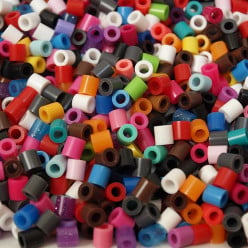Must photos always be full width?
It appears that some editors (not all) automatically change all photos to full width when moving a hub to a niche site, even when it makes the hub less appealing in desktop view. Am I correct in thinking that if the hub author has checked to make sure that half-width photos appear correctly in mobile view, HP doesn't object to returning photos the editors changed to full width back to half width?
Hi Ron,
We recommend always making photos full-width if possible, and the editors will typically do this unless the photo in question is too small and becomes blurry/pixellated when expanded.Yes, but I think I'm right in saying you do that so they display correctly in mobile view. Is that correct? If there is another reason, what is it?
IF the writer has placed the image correctly, then it's possible to have an image that's right-floated in desktop view, yet still displays correctly in mobile view. To my mind that's the best of both worlds.
I can understand your policy because there are Hubbers who don't read instructions and therefore will use right-floated capsules without understanding the implications. For those of us who know exactly what we're doing, it just seems irritating to remove our ability to create an attractive layout, even if we don't have a lot of desktop customers left.A majority of my traffic still comes from desktop rather than mobile, so I think it's important that my audience gets the best possible experience.
And, it's not only photos. Sometimes I like to make a sidebar, like you might find in a magazine. Relevant, and related text that is not properly part of the article. I would usually give them a tinted background and float them right.
They look odd when they are simply inserted into the article.
It depends on the photo. A strong horizontal photo works well when it is full width. But a strong vertical photo doesn't always work well full width because it forces the visitor to scroll quite a bit to read the rest of the article.
So the actual dimensions of the photo matter. But as you can see, opinions differ on this question.I'm waiting for HubPages to remove the ability to right-float altogether. After all, their own staff refuse to use the feature any more, that's a fairly strong indication IMO.
I'll be sorry when that happens. One of the things I really loved about HubPages, when I first arrived, was the ability to create a web page that looked so magazine-like, with pictures and highlighted text sprinkled through the text, creating something that was visually interesting as well as informative. Mobile has turned it into a boring sequence of text, photo, text, photo, ad, text, photo....Exactly my point. Portrait mode photos work great right-floated, but take up too much vertical space at full width. To me, when a half-width photo is properly placed so that in mobile view it appears above the appropriate capsule, you get the best of both worlds.
This could be easily solved by using something like Bootstrap. Forcing images to display full width 100% of the time is just poor, lazy design. Their excuse is because mobile is the trend of the future, but the standard that exists to meet that trend is in responsive design.
Responsive design creates a good desktop experience, and automatically adjusts based on screen size. HP has a history of making the wrong decisions for the right reasons, though. So it's no big surprise.Well, HubPages' design does adjust - it's just that it does it in a simplistic way.
It would be very, very simple to solve the problem. All they need do, is set it up so that a right-floated capsule always appears UNDER its related paragraph (instead of above it, as now). I cannot think of a single case where this would not work.
I agree with what everyone here has said too. If the hubber is making sure that the article looks good in both desktop and mobile view it should not be a problem.
I guess it's also a matter of time for the editors. If they need to confirm that mobile view looks good on multiple hubs it's decreasing their overall efficiency. But this shouldn't reduce on the user experience.
Related Discussions
- 16
Recommended width of photos and videos
by SmartAndFun 9 years ago
Apologies in advance for asking a question I should know the answer to, but I just can't keep track anymore, and the search function is not yielding any helpful results.When writing new hubs or updating old ones, is it now recommended to place photos and videos so they take up the full width of the...
- 29
Editing photo capsules
by Mark dos Anjos, DVM 9 years ago
In looking over my edited hubs, I find many inconsistencies. Some hubs will be changed so that all large photos are seen (for mobile viewers?), others will be changed into thumbnails, others not changed at all. Some photos are moved above the text capsule, others below. What does HP now consider to...
- 11
Would Somebody Please Clarify What Size The First Hub Photo Should Be?
by AJ 10 years ago
Hi everybody - would you mind just clarifying what size the first photograph on your hub should be - is it 800 x 800 pixels? Thank you so much for your help. And, I am really sorry if this is super obvious and there are a gazillion forum topics etc. about it already. I have been looking and have...
- 27
With all capsules full width, what about sidebars?
by Ronald E Franklin 8 years ago
The biggest issue I have with all capsules having to be full width is that there now seems to be no provision for sidebar content. I've had to eliminate several sidebar text capsules because although they have supplementary information that would be useful for the reader, they just can't be fitted...
- 18
Full Width Capsule Edit Glitch
by Liz Elias 7 years ago
Hello-- I've been working diligently to edit all the hubs listed under 'which of my hubs will be affected.' I've gotten it down to under 200, but there are still many to go through.It has been gratifying to see the list shrink, and titles disappear from that list as I go. However,...
- 11
Have we gone back to full width photos again?
by Sondra Rochelle 11 years ago
I just realized that people are using full width images in their hubs again, even at the beginning. The team used to tell us NOT to do that because at the top of the article a photo makes a post take to long to load and also takes up space that should be given to advertisers and in the middle...












